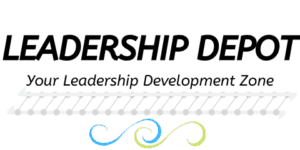The democratic leadership style is a collaborative style whereby the leader solicits opinions by team members prior to or during the decision-making process. It’s also known as participative because individuals on the team are active participants in moving their portion of the company through a process on the way to the desired outcome.
Frequently, this may be a brainstorming session, or it may just be individual conversations. Regardless, under democratic leadership, associates are encouraged to present ideas, discussion takes place freely, and the leader ultimately considers all of the feedback and determines the best course of action in moving forward.

This management style is considered beneficial because it enables creative ideas to flow freely, with the results often being a far better outcome because of the different perspectives considered. Employees are consulted regarding their own contributions, and there’s collaboration not only in how to reach organizational goals, but also in how the individual will reach their next individual goals. Employees feel valuable to the organization, boosting overall morale, and therefore, becoming more loyal and invested in the success of the organization.
Benefits of Using the Democratic Leadership Style Include That It:
- spreads power, putting value on contributions of associates
- encourages creativity
- engages everyone involved
- is helpful in presenting the very best the group has to offer
- can be a platform for praise of employees who are instrumental
- creates an underlying current that’s viewed positively by employees, and therefore
- can help reduce turnover
Here Are Some Democratic Leadership Examples:
Mary works as the manager of the finance department. The Controller has asked Mary for some specific figures to be used by the executive team in a proposal for work, showing the company’s profitability in certain areas. Mary calls an impromptu meeting with the finance department to brainstorm what the team thinks is the best information to present and the best format to use to present it.
Mary opens the discussion and the team whiteboards the best ideas. Mary facilitates the discussion, but lets others get creative to come up with the best possible presentation. When conversation has run its course, Mary thanks everyone, ends the meeting, processes the discussion, and presents the best idea to upper management.
Jerry heads up the HR team. Jerry is responsible for an employee appreciation get-together. Jerry pulls his HR team together, and asks them to determine the format for the best event and tells his team that he’ll get feedback during their weekly meeting. The HR team talks with others in the company and presents their feedback to Jerry at the weekly meeting. Because they got feedback from others in the company, they were able to format the celebration that made other departments happy, and the other departments felt valued because they were asked.
While there are many benefits to this style of leadership, there are times when there may be drawbacks, or when another style may be effective.
One of these times is when decisions need to be made urgently. Collaboration takes time. It takes time to gather feedback, digest it, format it and then use it. Sometimes, decision-making needs to happen quickly.
Another is when control, due to industry, safety, etc., is paramount for the bottom line or final results. (An example of this might be construction or military.)
What Does All This Mean?
The democratic leadership style has many benefits in many different organizational environments. There are also times when collaboration isn’t the best course of action. The best leaders are those who are able to weigh the circumstances, look at the objectives, and determine the best way to meet the goals while still showing value to their team overall.

